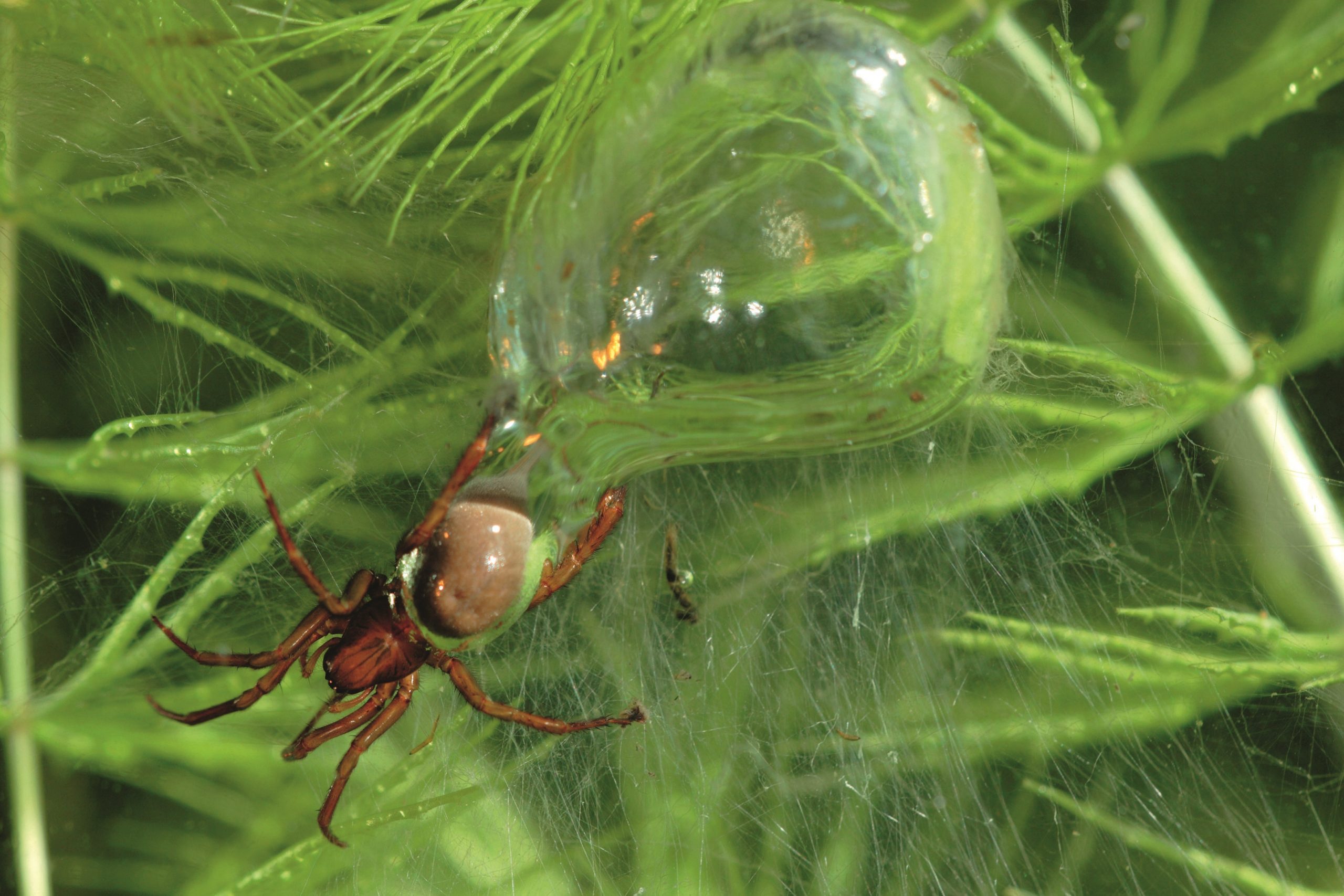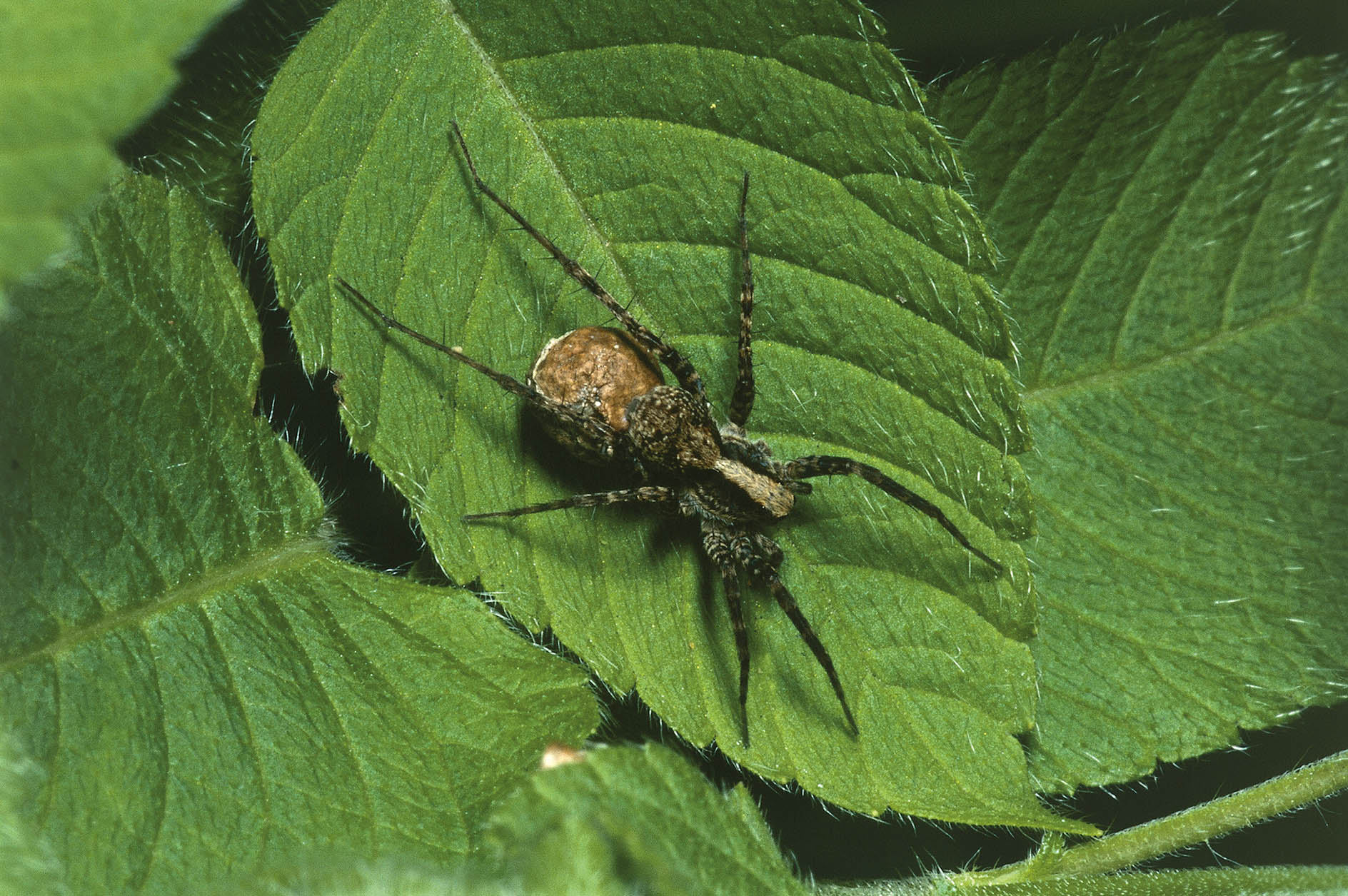Spiders' webs: Tougher than steel or Kevlar, the miracle material of Nature's tiny assassins
Whether woven to ensnare unsuspecting victims or to cocoon precious eggs, spider silk is a wonder of Nature, each translucent thread so fragile, yet stronger than steel, says Simon Lester.

Having wandered around the countryside as a gamekeeper for most of my life, observing Nature has always enthralled me. I have been fortunate to witness many spectacular wildlife encounters — not least a peregrine falcon striking a red grouse in an explosion of feathers — but, often, it is the sheer beauty of something common and humble that gives me the greatest joy. Cobwebs are that very thing, the work of the industrious spider, whether it be hung on a frosty autumn morning, glinting between the dried stalks of hogweed, or covering in a continuous sheet of shiny gossamer a heather-clad hill or low-ground stubble.
In Britain, we have 37 spider families, making up about 650 types of the eight-legged arachnids. Not all of them weave webs to catch prey, however — only about half do; others, such as the wolf spider, which chases down its victims, bites them and sucks them dry, spin silk to make a nursery for their young.
Spiders, incidentally, are master hunters, as well as weavers: jumping spiders leap and crab spiders ambush while lurking in the undergrowth. Then there is a group of vagabonds, the pirate spiders that pretend to be a tasty morsel caught and helpless in another spider’s web; when the owner of the web approaches, anticipating a meal, it becomes the meal.
Uses for silk are numerous, ranging from shelters and hiding places to moulting platforms, not to mention sperm- and egg-carrying webs for males and females respectively. Some webs are straightforward and practical, but others can be bizarre — the spitting spider (Scytodes thoracica) captures its prey by squirting a sticky mess of poison-infused silk across a distance of ⅜in; this cements the victim to the spot to await the coup de grâce from these miniature assassins.

For baby spiders, webs are also the equivalent of an aeroplane — a means of fast conveyance through air. Unlike insects, spiders have no larval or pupal stage in their life cycle: they emerge from their eggs as tiny spiders (known as spiderlings), mainly in the autumn. This is when we see the countryside festooned with little silken streamers: these gossamer threads are the result of the spiderlings launching into the big, wide world — literally. Each tiny spider climbs as high as it can, then turns into the wind, lifts up its abdomen and secretes a strand of silk. As the thread is caught by a current and gets longer, the spiderling is launched into the air, starting a haphazard journey that may be a few yards or several miles long, all at the mercy of what and how much is blowing at the time. The tiny money spider is a great exponent of this mind-boggling technique, known as ballooning, leaving whole vistas glistening in the low autumnal afternoon sun.
"Spider silk is the toughest fibre in Nature — it’s tougher than steel and Kevlar"
We can only marvel at the powers of these incredible arachnids — it is no wonder that their antics have inspired one of the greatest superheroes, Spider-Man. And, although it might not hold the weight of a man, even one as light as Peter Parker, spider silk is the toughest fibre in Nature — it’s tougher than steel and Kevlar, with some stretching up to five times their relaxed length without breaking. Many spiders also produce several different types of silk, varying in thickness, stickiness and elasticity, to perform distinct tasks, unlike other silk-spinning invertebrates that can only produce one type of thread.
Most spiders have six spinnerets, the organs situated at the rear of the abdomen that produce silk. These spinnerets dictate the type of silk that a spider produces by positioning the complex protein molecules making up the many different filaments to give silk the appropriate strength and flexibility for a dedicated task. Stored as a liquid, the silk only becomes a thread when it is pulled from the spinneret by gravity or a spider’s hind leg. Some spiders can even change the texture of their silk by combing it with their specialised hairy legs to give it a more Velcro-like texture.
Exquisite houses, the beauty of Nature, and how to get the most from your life, straight to your inbox.

The most familiar structure spiders build with their silk is the web they weave to catch prey: the most magnificent example being the one woven by the large and very common garden spider (Araneus diadematus), one of 40 orb-web spiders that frequent the British Isles. The female garden spider, who spins the web, begins casting out lines of silk into the wind. When the thread attaches to an object, she can then start to construct the large, two-dimensional cartwheel-shaped web.
After the radial strands are done, she lays down the spiral thread that concentrates into a lattice at the centre of this feat of engineering, which measures up to 40cm (more than 15in). She will then eat some of the web and replace it with her sticky silk to make it more lethal for unsuspecting prey — but she avoids sticking to her own trap by coating her feet in oil, at least according to theory. Two hours of toil later, she waits hungrily, head down in the centre of architectural endeavour, for her first victim.
Equally riveting are the sheet webs that are built by money spiders, part of the 280 species-strong Linyphiidae family, the largest in Britain. Designed to catch insects in a different way, these tightly woven sheets lie horizontally across low vegetation; insects either fall after hitting the webs or get ensnared trying to cross the sticky expanse.
Perhaps the most familiar spider creations are tangle webs — the dust-collecting cobwebs that show up in our home. Their tangled appearance may be scruffy, but doesn’t detract from their efficiency in catching prey. These three-dimensional webs are constructed by four families of British spider, including the ungainly daddy longlegs (Pholcus phalangioides), which is a good house guest as its flimsy, tangled webs, situated in corners and behind furniture, capture many unwanted intruders. For the longleg is a mighty predator: its delicate appearance belies its ability to eat even larger spiders.

The big, hairy house spiders (Tegenaria domestica) that clomp across the carpet or appear in the bath are Britain’s largest spiders and belong to the funnel-web building tribe. Despite the fuzzy arachnids’ name, their webs are not exclusive to the home — they are also found outdoors. These large sheets of closely woven silk, which funnel into a long tubular lair at one edge, can become considerable in size, as the female house spider might live up to four years and several generations can refurbish and add to their silken dust trap. Another ‘funneler’ is the labyrinth spider (Agelena labyrinthica). It makes a proper funnel down among grass or low vegetation, the head-turning architectural design protecting the resident and its eggs in a labyrinth of tunnels. In a chamber, the egg sac floats, eerily suspended by silken threads from all sides.
Even more fascinating is the purse-web spider (Atypus affinis), the only one in Britain that has this type of web (it’s also the only one in this country to be related to the tarantula family and equipped with a useful set of downward-pointing fangs). Its sock-like web is partially buried and the cunning creature waits in the tube for its target to crawl on the outside of the web. The spider then breaks through the web and puts its poisonous fangs to work, skewering the victim and dragging it back into the lair. A quick repair job on the web and this wily capture method is good to go again.
Three species of spiders spin lace webs, so called because the strands of silk appear woollier. They, too, construct tubular hiding places and the woolly texture of their threads, woven loosely over gaps, allows them to catch their prey without the webs being sticky (they have an efficient Velcro effect).
You need to go out at night to spot the radial-web spinners, hunters of the Segestriidea family, of which there are three in Britain. Their webs are not made to ensnare; the central tube is where the spider lurks, waiting for one of the many connecting radial threads to telegraph the presence of a passing victim. The largest member of this family is the tube-web spider (Segestria florentina), whose females grow up to 2cm (a little under 1in) and can be recognised by their striking, iridescent-green jaws.
Amazingly, not all spider webs are found on land. The water spider (Argyroneta aquatica) is also known as the diving-bell spider because of its tightly woven underwater web. It is the only spider that can permanently live underwater. It does this by going to the surface and trapping air bubbles in the hairs on its abdomen, which then transports it back to its mini inflated Atlantis, where it lives, mates and eats, like a novel Aquaman. Who needs superheroes when you have spiders?

Credit: Alan Baker for Country Life
Nature's most dangerous journey? The lifecycle of the salmon
A miracle of Nature, the salmon braves body changes, hungry seals and forbidding waterfalls on its extraordinary journey to and

A complete guide to the sharks you'll find in the seas of Britain (and the one you'll be glad isn't here yet)
From elusive angelsharks to chunky, sprinting shortfin makos and glow-in-the-dark velvet belly lanterns, award-winning marine biologist Helen Scales gets up

Why are there so many magpies?
Magpies seem to be flourishing, so much so that seeing 'one for sorrow' is more often closer to '11 for

Credit: Getty Images/Robert Harding
Curious Questions: Why don't spiders get caught in their own webs?
Spiders webs are sticky — very sticky — and make short work of flies, wasps and other insects. So why don't the

Credit: De Agostini via Getty Images
The 10 spiders you'll find in the houses and gardens of Britain this Autumn
It's the time of year that you'll find spiders inviting themselves into your home — but what are they? Ian Morton